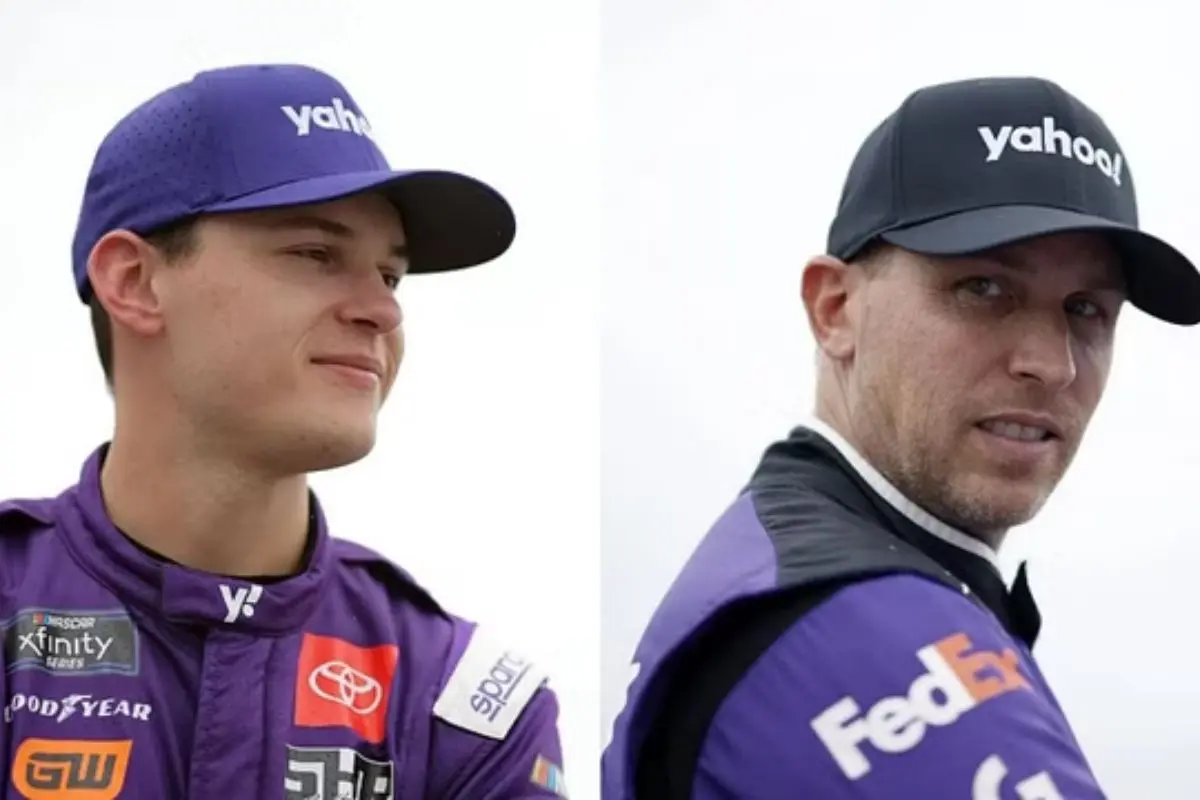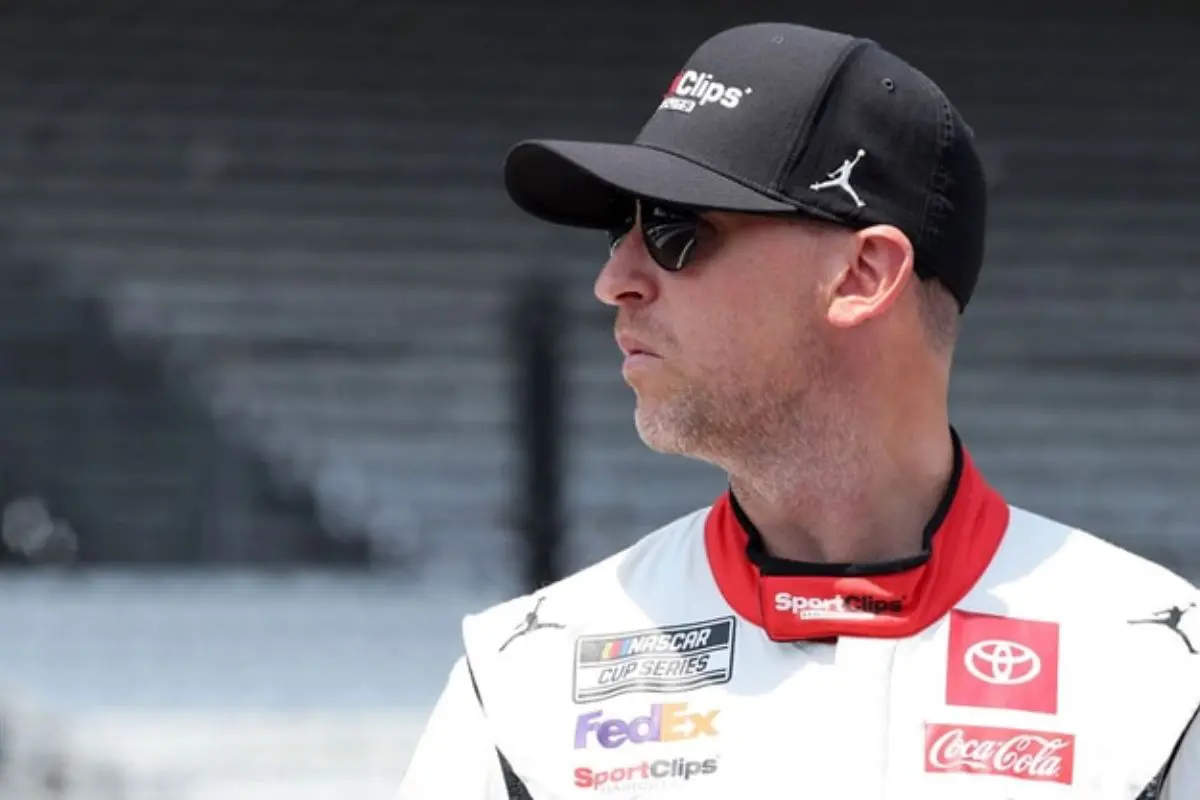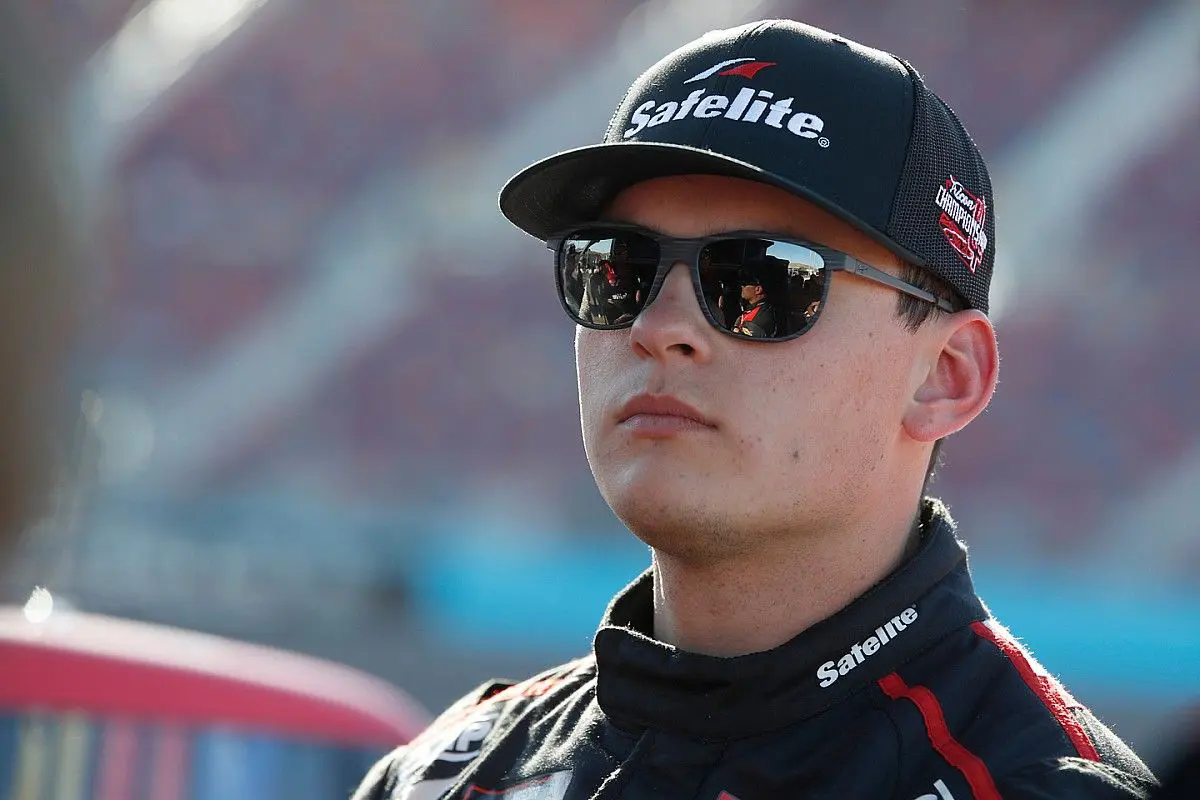Denny Hamlin Defends Corey Heim’s Aggressive Xfinity Move: Denny Hamlin‘s recent defense of Corey Heim amidst the backlash over his aggressive tactic during the Xfinity race raises important questions about the delicate balance between individual ambition and manufacturer loyalty in NASCAR. Hamlin’s assertion that calculated risks are integral to a driver’s success invites a deeper examination of the dynamics at play within team environments, particularly when perceived betrayals come into focus. As the sport evolves, the implications of such decisions on driver relationships and team strategies become increasingly complex, prompting a critical inquiry into what loyalty truly means in a competitive environment.
Key Highlights
- Denny Hamlin highlights the tension between manufacturer loyalty and individual ambition, showing the complexity of racing dynamics.
- Corey Heim’s tactical decision to prioritize personal advancement over teammate support sparked accusations of betrayal within Toyota.
- Hamlin defends Heim, emphasizing that racing often requires calculated risks for personal success, regardless of team dynamics.
- The Xfinity Series show the balance between collaboration and competition, with drivers needing to navigate their ambitions carefully.
- Hamlin’s mentorship of Heim highlights the importance of experienced guidance in enhancing driver performance and decision-making.
Xfinity Race Drama and Support from Rivals
In the world of competitive racing, tactical decisions often take center stage, revealing the complex dynamics among drivers and their teams. The recent Xfinity races have emphasized this intricate interplay, particularly highlighting how rivalries can shift allegiances in pursuit of victory.
During the Coke Zero Sugar 400, Ford driver Harrison Burton astoundingly defied conventional expectations by receiving a vital push from Chevrolet competitor Parker Retzlaff. This unexpected collaboration demonstrated the fluidity of alliances in racing and stressed the necessity of tactical thinking in high-pressure situations.
The drama continued in the latest Xfinity race, where the actions of a driver raised eyebrows within the Toyota camp. Instead of assisting his fellow Toyota driver, Corey’s Heim’s decision to prioritize his own chances for glory ignited conversations about loyalty and competition.
While the intended outcome did not materialize, it illuminated the harsh reality that, in the quest for victory, personal ambitions often eclipse collective interests.
Denny Hamlin, a seasoned figure in the racing community, defended Heim’s bold action, suggesting that the instinct to compete fiercely is inherent to racing. This perspective speaks to a broader truth in motorsports: the balance between collaboration and individual ambition.
As drivers navigate the complexities of team dynamics and rivalries, these moments of tactical decision-making become essential, shaping not only the races themselves but the very fabric of racing culture. Consequently, the support, or lack thereof, from rivals like Hamlin carries considerable weight in understanding the evolving narrative of competitive racing.
Hamlin’s Perspective on OEM Betrayal
Denny Hamlin’s perspective on the recent actions of Corey Heim highlights a fundamental tension within the racing community: the balance between manufacturer loyalty and individual ambition. As a seasoned competitor and team owner, Hamlin understands that drivers often face the difficult task of prioritizing personal success while remaining true to their OEM affiliations.
In the case of Heim’s tactical move against fellow Toyota driver Chandler Smith, Hamlin sees a reflection of this dilemma.
In NASCAR, where ambition fuels careers, the implications of a perceived betrayal can reverberate throughout the paddock. Hamlin articulated his support for Heim’s decision, emphasizing that racing is inherently about taking calculated risks to advance one’s position.
“If I could sum it up, I think he was making the best move he could for himself.” -Hamlin
This incident invites a broader conversation regarding OEM loyalty and the demands that drivers face.
- The competitive nature of NASCAR necessitates individualistic decision-making.
- Drivers are often torn between team obligations and personal aspirations.
- Manufacturer alliances can complicate interpersonal relationships among competitors.
- Tactical moves may be viewed as betrayal, despite the context of competition.
- The evolving landscape of NASCAR demands adaptability from young talents like Heim.
Through his endorsement of Heim’s actions, Hamlin reaffirms a perspective that prioritizes personal growth and competitive spirit, even in the face of potential backlash from the manufacturer.
Hamlin’s Explanation of Heim’s Decision
The complexities surrounding Corey Heim‘s decision during the race illuminate a broader narrative about individual agency in the competitive landscape of NASCAR. As the race neared its finale, Heim faced a crucial choice: assist his teammate, Smith, or carve out his own competitive advantage.
Denny Hamlin, in a forthright analysis on his podcast ‘Actions Detrimental,’ articulated the subtleties of this dilemma, particularly highlighting Smith’s precarious position. Hamlin noted that the dynamics in the middle of turns three and four created a scenario where Smith lacked the momentum needed to secure a decisive lead.
“Chandler kind of got underneath Austin in a very weird place in the middle of 3 and 4. At that time it’s like, there’s not gonna be enough momentum that he can pass him.”
“I think it’s very rare, if not none, that a 3rd-place guy, say there’s no affiliation, would choose the bottom car unless it was a direct teammate. Corey then went to the high side, pushed Austin, passed Chandler.” – hamlin
Hamlin defended Heim’s choice to adopt a self-serving strategy, suggesting that in the competitive environment of the sport, such decisions are not only justifiable but often necessary. He remarked on the rarity of a driver in third place choosing to support a lower-positioned car unless they share a direct teammate affiliation.
A clean corner away from win #1. @CoreyHeim_ has believed in this team when others haven’t. Took the shot. P5. #TeamToyota pic.twitter.com/Fe1MnkZbQT
— Sam Hunt (@SamHunt22) September 9, 2024
By opting for the high side and pushing Smith, Heim exhibited a tactical insight that reflects the harsh realities of racing. Moreover, Hamlin emphasized the absence of loyalty between Heim and Joe Gibbs Racing, asserting that such affiliations do not obligate a driver to sacrifice their own aspirations.
Team Ideals in Play for Heim
Loyalty within a racing team often presents a complex web of expectations and aspirations, particularly in the case of Corey Heim. As a driver for Sam Hunt Racing, Heim’s commitment to his team reflects the intricate dynamics of professional motorsport. While he is affiliated with Toyota, his allegiance does not lie within the confines of the powerhouse Joe Gibbs Racing. This distinction highlights a broader narrative concerning team ideals and individual ambition.
“I think that Corey doesn’t have any alliance or allegiance to JGR, and JGR doesn’t have any allegiance to Corey. So he’s gonna do to what he thinks he can do to win the race. I thought he made the best move to do that.” – hamlin
- Team Identity: Sam Hunt Racing has cultivated a unique identity within the Xfinity Series, aiming for recognition and success against larger, more established teams.
- Performance Stress: With 26 top-10 finishes but no trophies to show, the strain mounts for Heim to deliver results that validate his team’s efforts.
- Collaboration vs. Competition: The balance between working collaboratively with the team and competing for individual accolades requires deft navigation.
- Long-term Vision: Heim’s ambitions extend beyond immediate victories, fostering loyalty that may yield future opportunities within the Toyota ecosystem.
- Fan Expectations: The desire for success not only stems from within the team but also from passionate fan bases enthusiastic to witness their drivers succeed.
As Heim continues to chase his initial victory, the interplay of loyalty, ambition, and team ideals becomes increasingly evident. This pursuit not only shapes his career path but also the legacy of Sam Hunt Racing in a fiercely competitive landscape.
Heim’s Commitment to His Team and Future
Amidst the competitive landscape of the Xfinity Series, Corey Heim‘s dedication to Sam Hunt Racing reflects a profound understanding of the symbiotic relationship between driver and team. His recent bold tactic on the track serves as an indication of this commitment, illustrating that his motivations extend beyond mere personal ambition.
Heim articulated the significance of gaining experience, stating, “Any kind of laps at any kind of track and car I can get into is pretty essential for my development.” This perspective emphasizes his willingness to invest in both his individual growth and the team’s progress.
That’s what I am here to do, to help Sam Hunt Racing find speed and I think we had a win today internally but certainly wanted the big one, just wasn’t meant to be.” – hamlin
Team owner Sam Hunt shares in this vision, expressing enthusiasm about the advancements made in their racecar packages. His acknowledgment that they have “made a ton of improvements” highlights a collaborative effort that aligns with Heim’s aspirations. Such synergy is significant in a sport where every ounce of performance can impact race outcomes.
“I think we’ve made a ton of improvements on our (superspeedway) cars, hybrid package cars…We obviously love Corey and want to see him racing on Sundays.” – Hunt
Moreover, Heim’s actions should not be misconstrued as a betrayal to Toyota; rather, they reinforce his loyalty to Sam Hunt Racing. As he seeks to enhance the team’s competitiveness, he implicitly fortifies his future prospects, especially under the mentorship of seasoned drivers like Denny Hamlin, who believes in Heim’s potential to thrive in the NASCAR arena.
News in Brief: Denny Hamlin Defends Corey Heim’s Aggressive Xfinity Move
The tension between individual ambition and collective loyalty in NASCAR is vividly demonstrated by the recent controversy involving Corey Heim’s race strategy. Denny Hamlin’s defense emphasizes the complexity of driver dynamics within teams and manufacturers. Racing inherently demands calculated risks, often challenging traditional notions of allegiance. As the sport evolves, the balance between personal success and team loyalty will continue to shape the decisions of drivers, showcasing the intricate interplay of competition and collaboration in NASCAR.
ALSO READ: Denny Hamlin’s Playoff Blunder: How One Risky Decision Might Undo His Season




